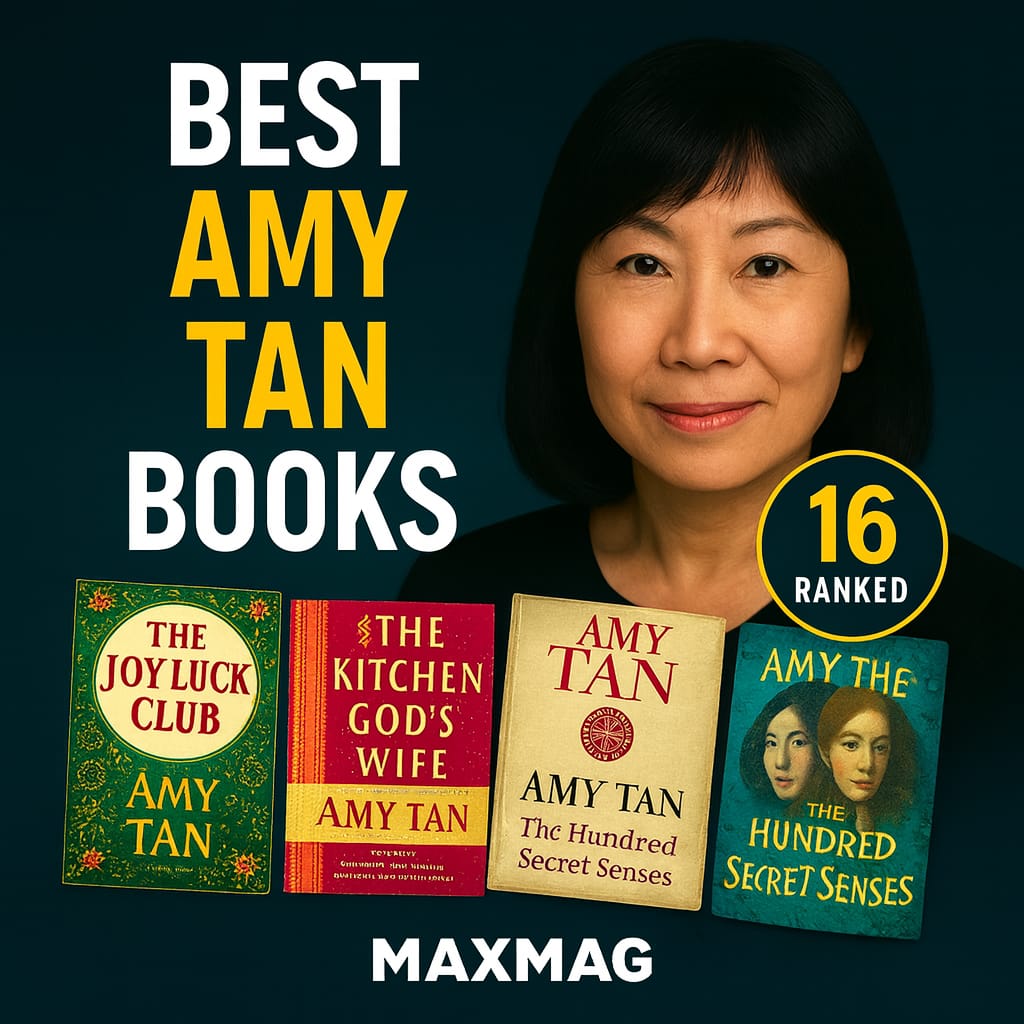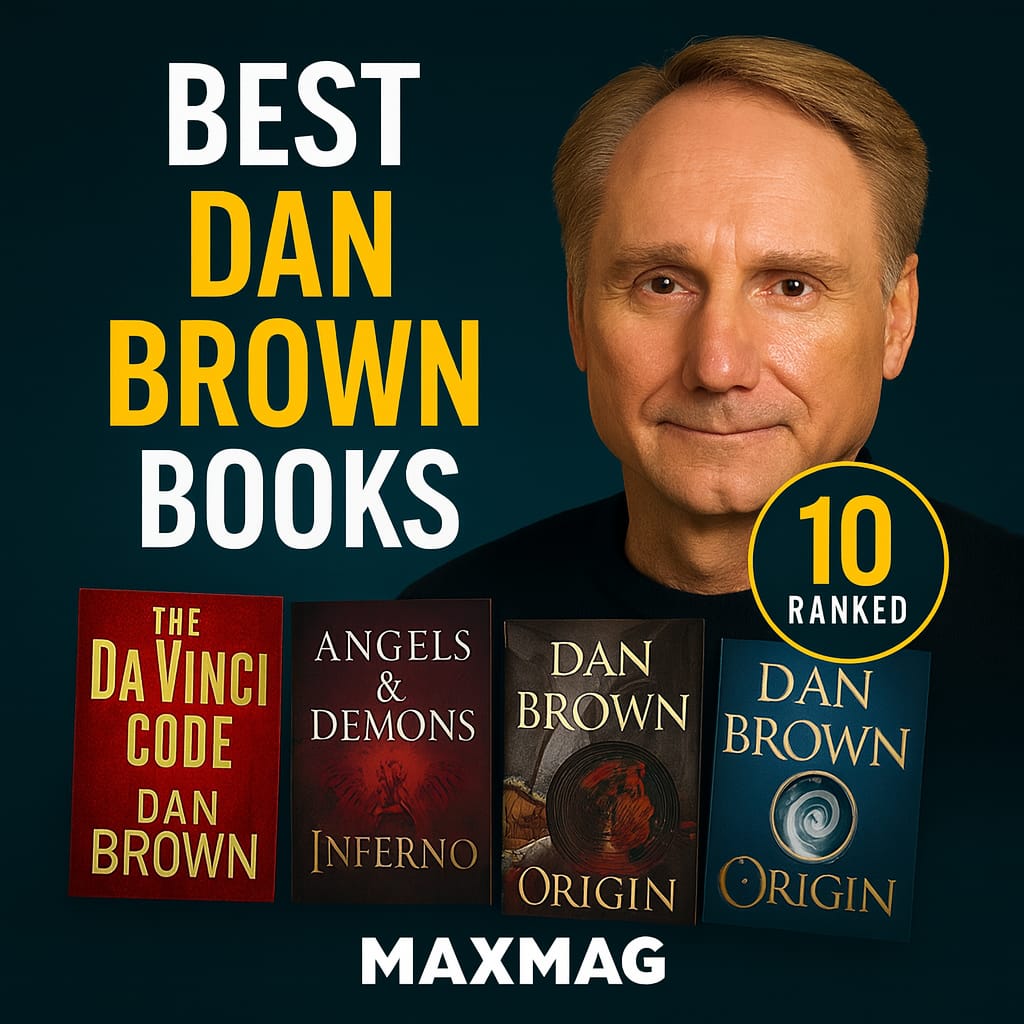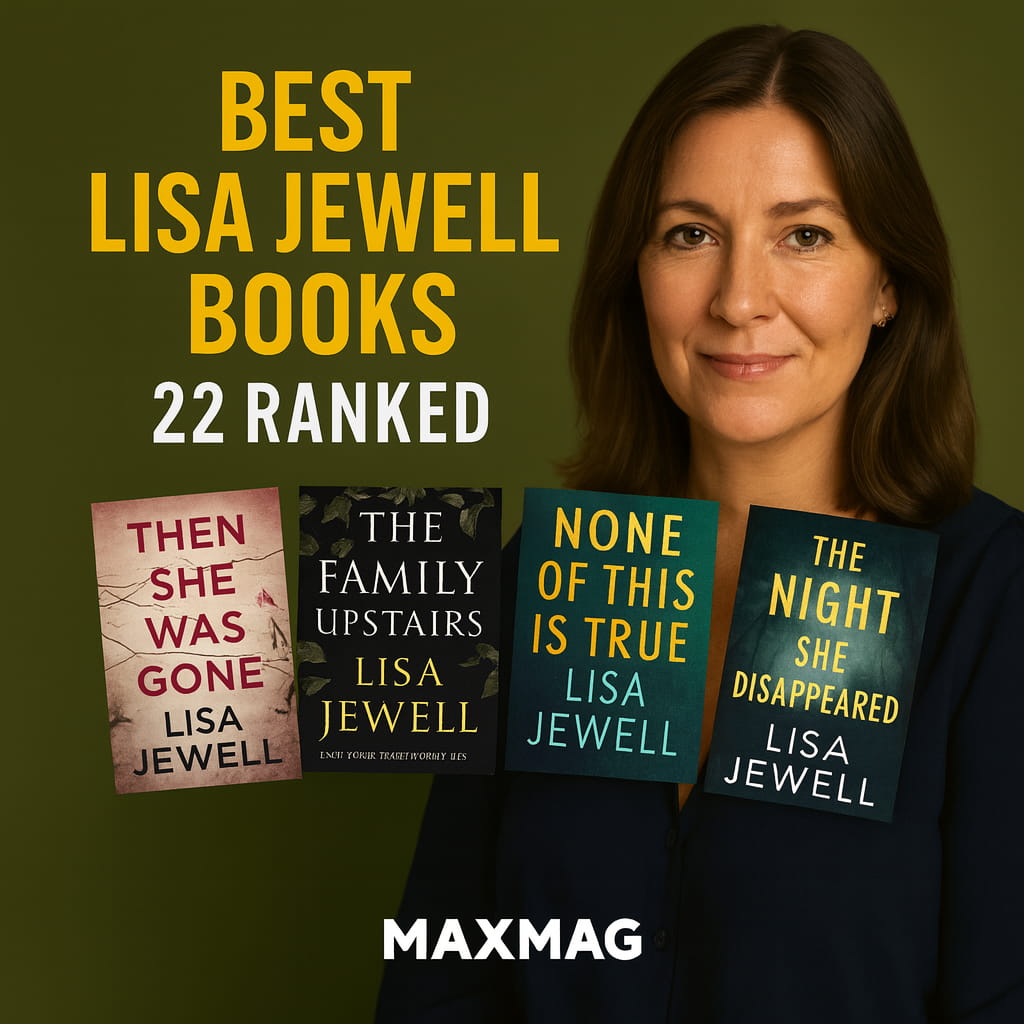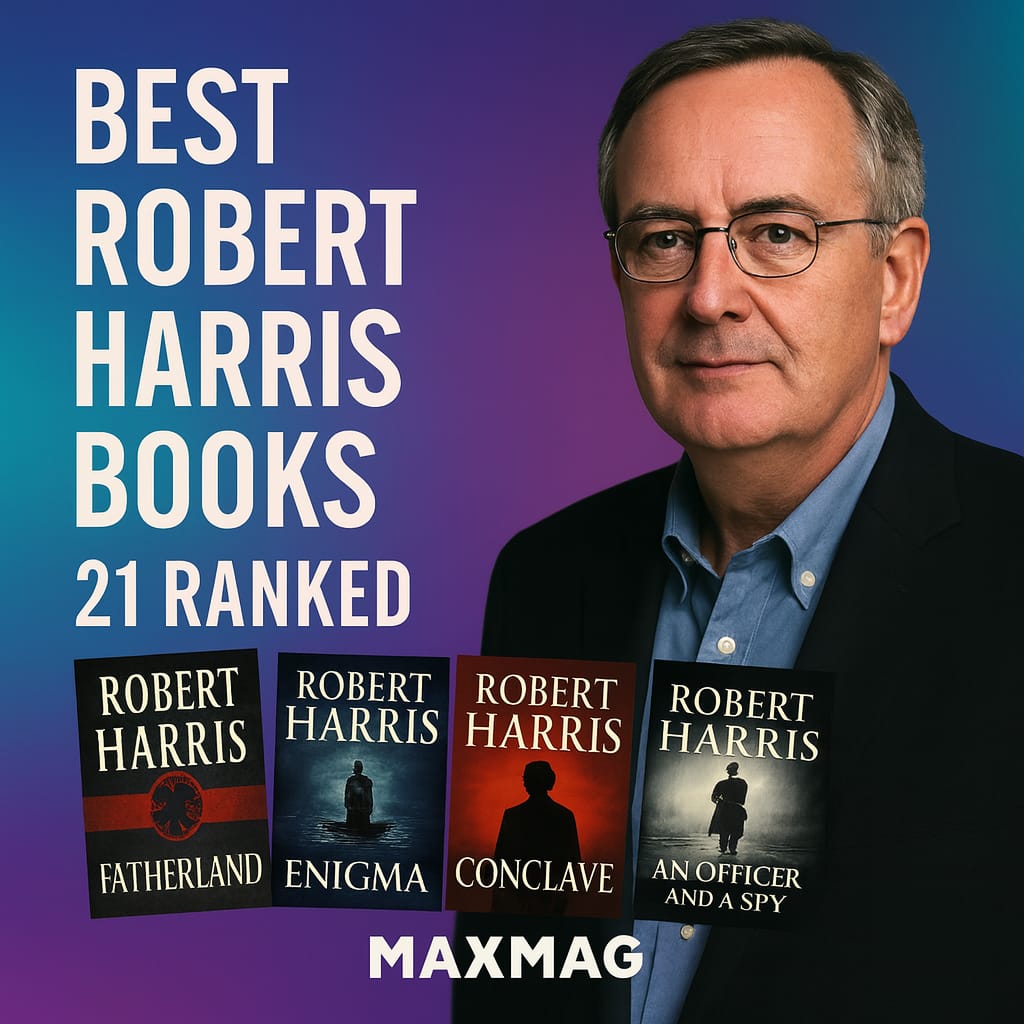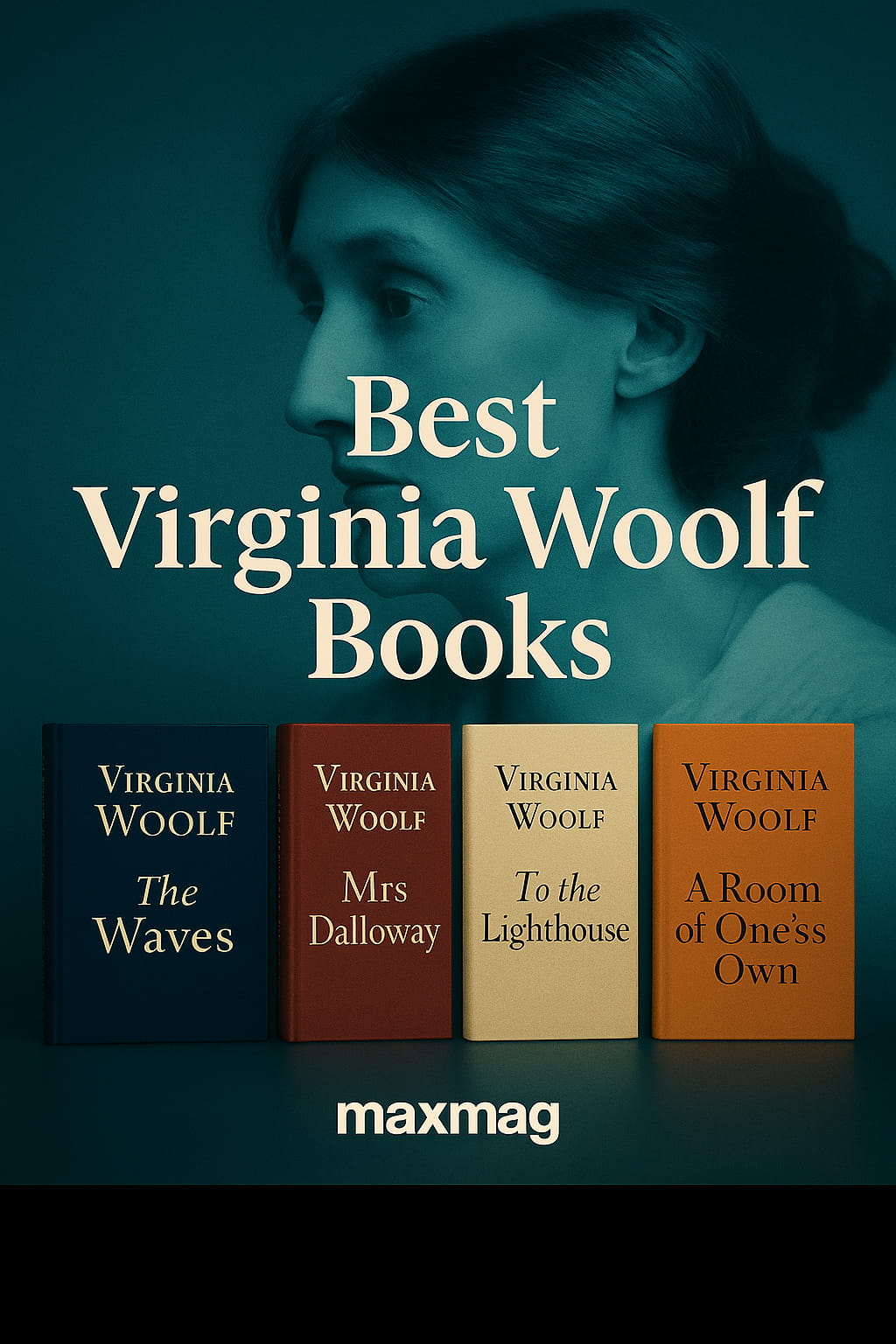
Born in London in 1882, the Best Virginia Woolf Books trace Adeline Virginia Stephen’s evolution into a writer who reshaped narrative time. An English novelist, essayist, and critic, she worked in modernist forms and stream‑of‑consciousness narration. Readers often meet her first through Mrs Dalloway and To the Lighthouse. She is widely known for novels, short fiction, criticism, and diaries. Her career stretched from the 1910s to the early 1940s. She published with the Hogarth Press, which she ran with Leonard Woolf. The books below focus on narrative works and book‑length arguments that became classroom staples. Across these titles, the emphasis stays on story and event, not style or reception.
Her broad recognition coalesced with Mrs Dalloway and To the Lighthouse, while A Room of One’s Own became one of her most read books. Across pages about city streets, family summers, and public life, recurring motifs include time, memory, illness, work, and access. Readers still care because the situations are concrete and the stakes immediate. This ranked guide includes 21 titles by publication year from 1915 to 1973. The list is sequenced in rising rating order; ties by year, then title. As a compact roadmap to the Best Virginia Woolf Books, the aim is clarity over hype. Works appear here if a major reader source recorded an average rating of at least 3.0 out of 5. Plot summaries stay factual and spoiler‑light so newcomers can choose confidently.
21 Best Virginia Woolf Books in a Rising Rating Order
Methodology & Updates
Ratings were captured from Goodreads on 17 October 2025 and rounded to two decimals; positions reflect that snapshot of reader sentiment. Where multiple editions existed, a commonly referenced listing was used. Ties were broken first by earlier publication year, then alphabetically by title. Because communities keep rating and reviewing, occasionally a book may move a slot over time.
#1) Freshwater – 1923
- Author: Virginia Woolf
- Published: 1923
- Work Type / Genre Tags: play; comedy; biographical satire
- Themes: art, love, reputation
- Goodreads Rating: 3.42/5
Set in late‑Victorian London and on the Isle of Wight, the play circles around painter G.F. Watts, his young wife Ellen Terry, and their circle at Little Holland House. A family gathering and an impending departure spark comic frictions over art, marriage, and propriety. Ellen wants a life beyond portraits and guardians, while Watts worries about reputation and control. Cousins and visitors arrive, trading proposals and objections that tug the household in competing directions. Plans to elope, pose, or retreat collide in impromptu rehearsals and letters that unsettle every alliance. A farewell scheme sharpens choices between duty and freedom, and a seaside interlude threatens to expose secrets. Commitments are tested on the day of decision, as the stage business funnels toward parting and public spectacle. The curtain falls on consequences set in motion by departures, with futures redirected by what is spoken and what is withheld.
#2) Jacob’s Room – 1922
- Author: Virginia Woolf
- Published: 1922
- Work Type / Genre Tags: novel; modernist
- Themes: war shadow, memory, identity
- Goodreads Rating: 3.52/5
The novel moves from Cornwall to Cambridge and across pre‑war Europe, following Jacob Flanders through rooms, letters, and travels. Glancing encounters and a shifting chorus of observers generate the central question of who Jacob is beyond others’ impressions. Jacob seeks study, society, and escape, while friends and lovers try to fix him in memory. Friendships, flirtations, and London rooms create crossings that expose gaps between intent and understanding. Trips to Greece and the lure of classics complicate affections at home and distance him from commitments. The drumbeat of approaching war shadows conversations, and telegrams begin to reframe private hopes. A sudden absence rearranges the lives of those who watched him, and a keepsake signals a turning point. What remains is a room emptied of its owner, and the residue of a life traced through places and things.
#3) Between the Acts – 1941
- Author: Virginia Woolf
- Published: 1941
- Work Type / Genre Tags: novel; modernist
- Themes: pageant, community, time
- Goodreads Rating: 3.61/5
In a country house in 1939, villagers gather for an outdoor pageant directed by Miss La Trobe, while the Olivers host and fret. The approaching war and household tensions form the backdrop to a theatrical retelling of English history. Isa and Giles weigh marriage and desire against duty and the day’s obligations. Neighbors arrive, scenes change, and the stage frames quarrels and reconciliations that spill beyond the lawn. Micro‑dramas in the audience echo the pageant’s tableaux, complicating alliances and expectations. A brief crisis behind the scenes threatens the performance and forces last‑minute revisions. The final mirror scene turns spectators into subjects, pressing them toward reflection without tidy answers. As rain threatens and evening falls, the gathering breaks, and the household faces the ordinary aftermath.
#4) Kew Gardens – 1919
- Author: Virginia Woolf
- Published: 1919
- Work Type / Genre Tags: short fiction (standalone chapbook)
- Themes: nature, chance, perception
- Goodreads Rating: 3.62/5
On a summer day in London’s botanical gardens, paths curl around a flowerbed where visitors pass and pause. A family stroll prompts recollections of a rejected proposal and the fragile choices that followed. The woman at the center wants small assurances about present contentment as the conversation drifts. Two men wander by, one discoursing on theology and snails, the other tugged by distraction and habit. A pair of working‑class lovers hesitate, testing a new intimacy with shared jokes and quick glances. A dragonfly skims the air while a snail inches forward, and both measures of time quietly redirect attention. A sudden decision to move on breaks the moment, and voices fade into the park’s hum. The scene closes with the garden’s indifferent rhythm, as footsteps, petals, and light keep shifting.
#5) Monday or Tuesday – 1921
- Author: Virginia Woolf
- Published: 1921
- Work Type / Genre Tags: short story collection
- Themes: city life, consciousness, flux
- Goodreads Rating: 3.64/5
Across eight urban and coastal sketches, unnamed narrators in London and the countryside look out of windows and into crowds. An ordinary errand or sighting triggers a swift disturbance that reframes a day’s logic. Observers want coherence from fragment and noise, yet each glimpse resists simple summary. Chance meetings, shopfronts, and lecture rooms braid together acquaintances who cross and uncross paths. A rumor or memory sends the action sideways, folding past into present and back again. A sudden image—heron, mirror, lighthouse—complicates what seemed linear and pulls the scene off course. The approach to resolution arrives as a change of light or vantage, not as confession or verdict. Each piece ends where attention moves elsewhere, leaving the city to continue without us.
#6) The Mark on the Wall – 1917
- Author: Virginia Woolf
- Published: 1917
- Work Type / Genre Tags: short fiction (chapbook)
- Themes: observation, imagination, class
- Goodreads Rating: 3.69/5
In a London room during winter, a narrator notices a small mark above the mantel and sits with it. The minor mystery stirs a chain of speculations about history, class, and life indoors. She wants to identify the mark, yet prefers the freedom of not knowing for a while. Imagined councils, catalogues, and systems crowd the room as possibilities multiply. Memories of lectures and drawing rooms intervene, making certainty feel like an intrusion. The wish to keep thinking collides with the tug of habit and the pressure of other minds. When interruption arrives, it pushes toward closure and the plain answer hovering all along. The scene ends with the mark named and the reverie dispersed by ordinary speech.
#7) Roger Fry: A Biography – 1940
- Author: Virginia Woolf
- Published: 1940
- Work Type / Genre Tags: biography
- Themes: art, friendship, modernism
- Goodreads Rating: 3.70/5
Beginning in Victorian London and Cambridge, the book follows Roger Fry from student to critic to curator. Opportunities and setbacks outline the making of an advocate for post‑Impressionism. Fry aims to change what Britain exhibits and buys, and to build spaces where new art can be seen. Friendships with painters and writers, including members of the Bloomsbury circle, test loyalty and purpose. Exhibitions, lectures, and reviews stir controversy that forces him to recalibrate strategies. Personal grief and new attachments complicate his public campaigns and home life. A late‑career project draws together his theories and his work behind the scenes. The life closes with the institutions he helped build still shaping what audiences encounter.
#8) The Voyage Out – 1915
- Author: Virginia Woolf
- Published: 1915
- Work Type / Genre Tags: novel; bildungsroman
- Themes: awakening, society, travel
- Goodreads Rating: 3.75/5
A ship leaves London for South America with Rachel Vinrace aboard, watched by relatives and new acquaintances. Shipboard conversations and a proposal half‑glimpsed unsettle expectations for the journey. Rachel wants a life not dictated by family scripts or easy answers. Friendships on board lead to invitations ashore, expanding the circle in a coastal town. An excursion inland complicates courtship and clarifies mismatched desires. A sudden illness interrupts plans and sends the household into vigil and negotiation. Choices tighten around what can be admitted and what must be deferred. The story ends with departures that recast the voyage as both crossing and loss.
Early Currents — Best Virginia Woolf Books in Formation
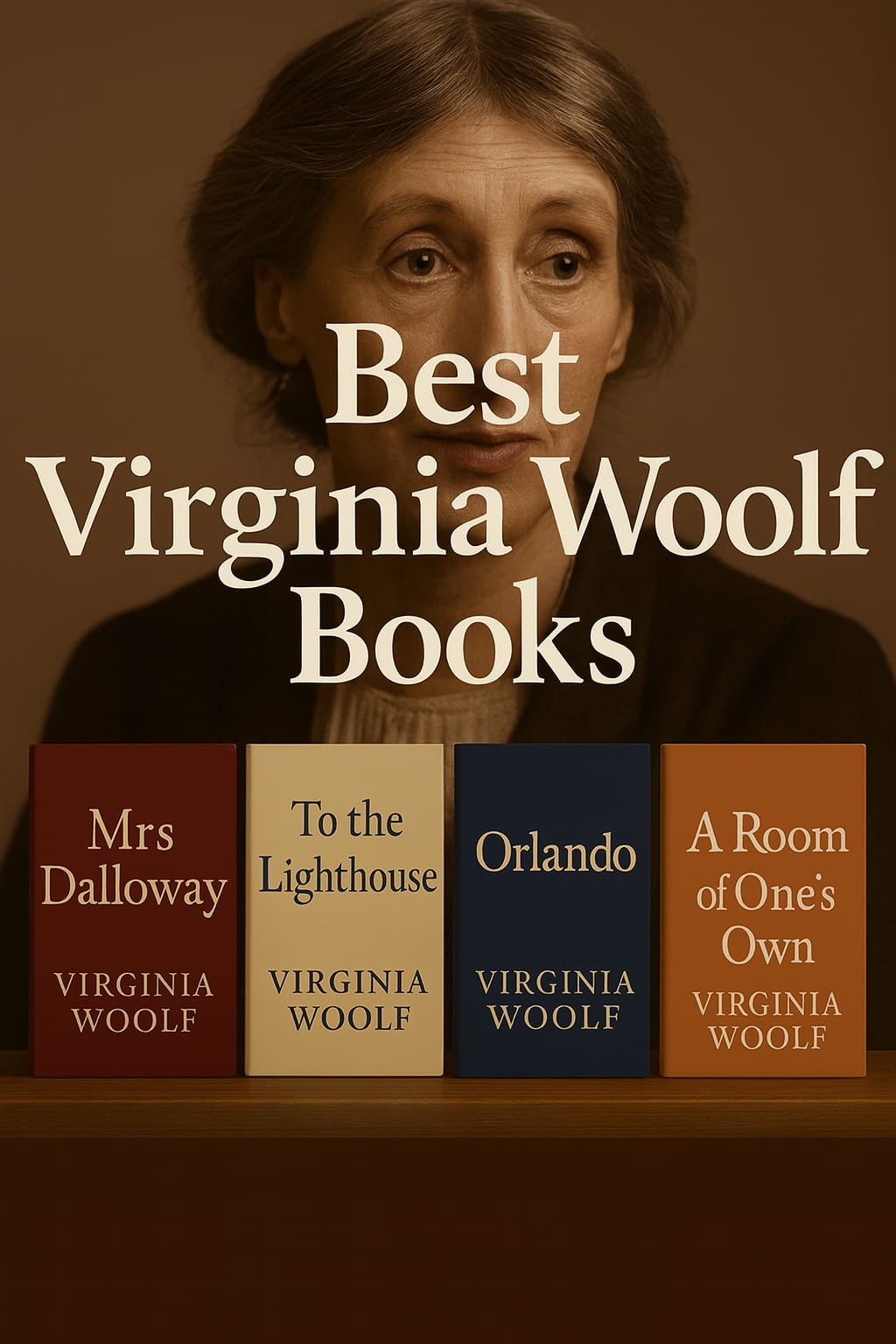
#9) Night and Day – 1919
- Author: Virginia Woolf
- Published: 1919
- Work Type / Genre Tags: novel; social
- Themes: marriage, work, autonomy
- Goodreads Rating: 3.76/5
Set in Edwardian London, the story follows Katherine Hilbery and Mary Datchet as work and love collide. A gentleman’s proposal and a friend’s expectation open competing futures. Katherine wants space to choose a vocation and a partner without defaulting to habit. Mary’s office and circle bring new debates that pull Katherine toward other rooms and ideas. A broken engagement, a scientific manuscript, and an election meeting reshape allegiances. Parents and mentors intervene, pressing for decisions that refuse to stay simple. Train rides and late‑night talks edge the characters toward a workable settlement. The narrative resolves in choices that arrange companionship and work for the next season.
#10) The Years – 1937
- Author: Virginia Woolf
- Published: 1937
- Work Type / Genre Tags: novel; family chronicle
- Themes: class, gender, change
- Goodreads Rating: 3.76/5
Members of the Pargiter family move from the 1880s to the 1930s through houses, letters, and dinners. Birthdays, schooldays, and wars set the clock for how siblings drift apart and reconverge. Eleanor wants use for her days beyond duty, while cousins ask different versions of the same question. Meetings in London squares and country parlors rethread grievances into new confidences. A will, a room, and a bequest complicate where each character thinks they belong. Street marches and gatherings raise the stakes for personal and political commitments. A planned reunion draws everyone toward a final evening that reframes old stories. The book closes with rooms opened and dispersed, and a future only partly visible.
Later‑Middle Turns — Mapping the Best Virginia Woolf Books
#11) Mrs Dalloway – 1925
- Author: Virginia Woolf
- Published: 1925
- Work Type / Genre Tags: novel; stream of consciousness
- Themes: time, illness, memory
- Goodreads Rating: 3.78/5
On a single June day in 1923 London, Clarissa Dalloway walks to buy flowers for a party and meets old names. A shell‑shocked veteran’s crisis unfolds elsewhere as doctors and friends cross paths with him. Clarissa wants the evening to hold together past and present without breaking anyone. Peter Walsh returns, stirring memories that interrupt errands with unresolved choices. A skywriting plane and city traffic braid strangers into one moving crowd. News travels through drawing rooms, tightening the day’s weave of intimacies and absences. As the party begins, arrivals and rumors tip the balance toward a difficult recognition. The night ends with gestures that hold a fragile continuity across the rooms of London.
#12) Mrs Dalloway’s Party – 1973
- Author: Virginia Woolf
- Published: 1973
- Work Type / Genre Tags: story cycle
- Themes: celebration, perspective, city
- Goodreads Rating: 3.80/5
Seven linked stories orbit the host of an evening in London and the guests who move from doorstep to dance. A misplaced invitation or a delayed arrival jolts carefully laid plans. One guest wants to be seen, while another hopes to pass unnoticed in the crush. Glances, jokes, and small injuries chart shifting territory between kindness and vanity. A wrong partner or an untimely remark sends a scene into a brief tailspin. A remembered snub changes a greeting and redirects the night’s alliances. Music cues fresh entrances and a pause that sets up the last exchange. As the lights dim, the party resolves in leave‑takings that echo larger choices.
#13) To the Lighthouse – 1927
- Author: Virginia Woolf
- Published: 1927
- Work Type / Genre Tags: novel; modernist
- Themes: family, art, loss
- Goodreads Rating: 3.81/5
On the Isle of Skye before the Great War, the Ramsays summer with children and friends facing the sea. A promised trip to the lighthouse falters with weather, age, and competing tempers. Mrs Ramsay wants one more day of harmony, while Mr Ramsay seeks proofs against failure. Guests arrive and depart, shifting allegiances around dinners, lessons, and small rituals. Time turns the house dark, and absences accumulate where conversation once held. A renewed visit reopens rooms to dust sheets, memories, and work unfinished. The decision to launch a boat and to finish a painting pushes toward separate completions. What follows is a day that reaches the lighthouse at last and a canvas that finally resolves.
#14) A Haunted House and Other Short Stories – 1944
- Author: Virginia Woolf
- Published: 1944
- Work Type / Genre Tags: short story collection
- Themes: love, houses, echoes
- Goodreads Rating: 3.83/5
Set mostly in London houses and gardens, the collection follows couples, neighbors, and solitary walkers. Small disturbances—ghostly whispers, a letter, a misread glance—start each movement. Characters want to locate a treasure, a message, or a route through grief. Rooms, paths, and parlors bring strangers close enough for mishearing to matter. A confession or discovery mid‑story tilts the ground beneath familiar routines. Daylight and dusk rearrange what is feared and what is desired within an ordinary street. Climaxes arrive as crossings of thresholds, when a door opens or a sentence slips out. Endings leave the chosen rooms quieter, with the echo of what was sought there.
#15) Orlando – 1928
- Author: Virginia Woolf
- Published: 1928
- Work Type / Genre Tags: novel; biographical fantasia
- Themes: identity, time, gender
- Goodreads Rating: 3.87/5
Beginning in the Elizabethan court, the young noble Orlando meets a visiting princess on a frozen Thames. A sudden heartbreak and royal favor set him wandering through centuries. He wants adventure, love, and a place in letters without losing himself to fashion. Encounters with poets and patrons shift his fortunes, culminating in a fateful sleep in Constantinople. He wakes to a change that recasts his life and sends him traveling again with new constraints. A return to England brings lawsuits, lovers, and a country estate to manage. A climactic race against time in London ends in a book, a marriage, and a reckoning with identity. The final pages fix a date and an hour as Orlando reaches home with the story intact.
#16) Flush – 1933
- Author: Virginia Woolf
- Published: 1933
- Work Type / Genre Tags: novelised biography
- Themes: companionship, class, freedom
- Goodreads Rating: 3.88/5
In Victorian London, a cocker spaniel leaves a country home for poet Elizabeth Barrett’s sickroom on Wimpole Street. A theft and a ransom frighten the household and test loyalties. Flush wants to stay near his mistress yet roam beyond leashes and shutters. Suitors and letters stir the room, and a journey to Italy offers other streets and scents. Encounters with class and cruelty unsettle what counts as comfort or safety. A change in household brings freedom, new dangers, and fresh companions. A final separation forces a choice between habit and a bolder path. The story ends with a dog settled in a sunlit room and a house turned toward the future.
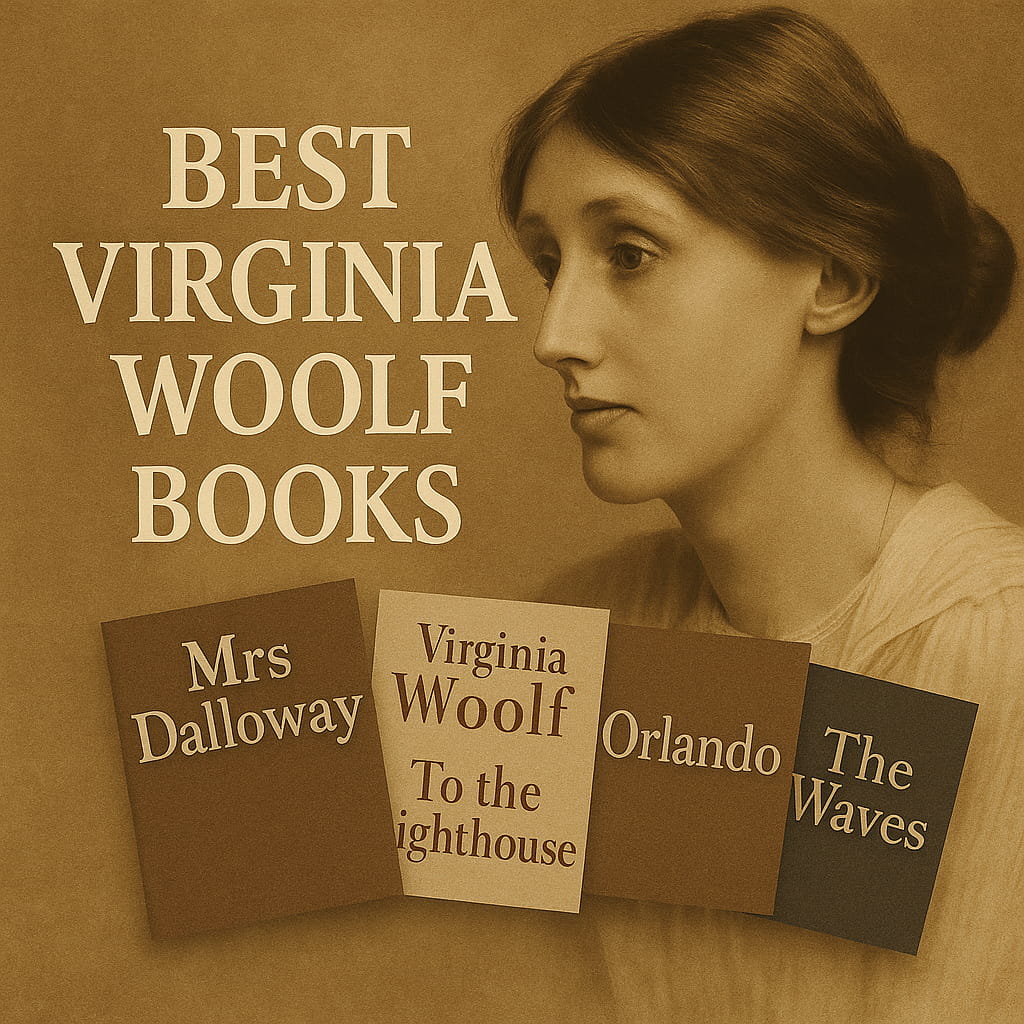
Momentum Builds — Toward the Peak of Best Virginia Woolf Books
#17) Three Guineas – 1938
- Author: Virginia Woolf
- Published: 1938
- Work Type / Genre Tags: essay; epistolary argument
- Themes: education, patriarchy, war
- Goodreads Rating: 3.92/5
The book opens as a reply to letters asking how to prevent war and what help the writer can give. A request for donations prompts a reconsideration of education, professions, and access. The narrator wants structural change before she parts with her funds. She consults photographs, reports, and examples to track how authority reproduces itself. The second letter shifts the problem to women’s admission into public life and professions. A third letter turns to specific institutions and the conditions placed on gifts. Her answer builds toward an outsiders’ association that resists uniforms and slogans. The response closes with guineas dispatched under terms meant to alter who decides.
#18) On Being Ill – 1930
- Author: Virginia Woolf
- Published: 1930
- Work Type / Genre Tags: essay
- Themes: body, language, perception
- Goodreads Rating: 3.98/5
A day of fever frames a meditation on how the body remakes attention and language. A stray sentence or a view from bed starts a turn from routine to altered perception. The narrator wants to account for illness without apology or metaphor that erases pain. Books, letters, and a window’s weather become companions that change as symptoms rise and fall. Reference points shift, and old consolations no longer fit what the hours demand. A visit or a note from a friend reorganizes the room, then leaves it straining toward quiet. A near‑resolution arrives as appetite, sleep, and the garden begin to return. The essay ends with the house reinhabited and the day shaped by what illness taught.
#19) The Common Reader – 1925
- Author: Virginia Woolf
- Published: 1925
- Work Type / Genre Tags: essay collection; criticism
- Themes: reading, history, authorship
- Goodreads Rating: 4.11/5
Across essays arranged like a journey, a reader moves from Elizabethan diaries to contemporary novels. An early stop in fifteenth‑century letters sets up how private lives enter public prose. The traveler wants to see how books talk to one another across time. Meetings with Defoe, Austen, and the Russians sketch a map of forms and tempers. A mid‑course detour into obscure diaries alters the route back to celebrated names. Shelves in the final rooms suggest how taste grows by wandering rather than by rule. The approach to a conclusion gathers voices into a working portrait of what reading can do. The last page leaves the traveler at home again, with a list of places still to visit.
#20) The Waves – 1931
- Author: Virginia Woolf
- Published: 1931
- Work Type / Genre Tags: novel; experimental
- Themes: friendship, time, self
- Goodreads Rating: 4.14/5
Six friends speak across childhood, school, and adulthood, with short interludes set by the sea. A first day at school and a lost object establish patterns of pursuit and retreat. Each speaker wants to persist as an ‘I’ while staying in conversation with the others. New rooms, jobs, and voyages alter who leads and who follows in the group’s eddies. A death in the circle changes the current and intensifies private vows. Work and love press different tests that none can pass or refuse for long. A drawn‑out evening moves toward an affirmation wrestled from near‑silence. The day closes with one voice standing, facing the sea, and naming what remains.
#21) A Room of One’s Own – 1929
- Author: Virginia Woolf
- Published: 1929
- Work Type / Genre Tags: essay; extended lecture
- Themes: work, money, space
- Goodreads Rating: 4.22/5
Invited to speak at Oxbridge, the narrator walks by lawns and libraries and is asked to keep off the grass. A luncheon and a locked door turn a simple errand into a lesson in access. She wants to know what conditions allow a woman to write books that last. At a desk, she traces incomes, inheritances, and rooms with keys that exclude or permit. An invented life for Judith Shakespeare tests what talent can survive without education or time. Ledgers and histories supply numbers that tighten the case for money and privacy. The argument builds toward a practical demand for income and a lockable room. The talk ends with a call to work now so that a future writer can sign her name.
Virginia Woolf: Life & Legacy
Adeline Virginia Stephen (1882–1941) grew up in London in a family of editors and painters, began publishing reviews in her twenties, and with Leonard Woolf co‑founded the Hogarth Press in 1917, releasing her own books and work by contemporaries. Her major forms included the novel, short fiction, biography, and essay, with signature works such as Mrs Dalloway, To the Lighthouse, Orlando, The Waves, A Room of One’s Own, and Three Guineas. She experimented with interior monologue and elastic time while anchoring stories in precise rooms, streets, and dinners. Awards mattered less in her era than the afterlife of syllabi and reprints, and few twentieth‑century writers entered classrooms as steadily. The Best Virginia Woolf Books chosen here show how those forms matured alongside the Bloomsbury circle and the imprint she ran. Her influence threads through later British and American fiction and through feminist criticism and pedagogy. For new readers, these Best Virginia Woolf Books sketch a complete first map: early novels, the mid‑period breakthroughs, the late summations, and the essential essays. Her papers and letters remain central to how universities teach modernism and the craft of character.
Conclusion
This guide gathers 21 books across three decades, from a debut sea voyage to late‑career tableaux, so you can see early rooms giving way to the lighthouse years and the culminating circle of friends. For an authoritative overview of her life and works, see the concise reference at Encyclopaedia Britannica. The sequence here makes plain how experiments become the later touchstones.
Across the set you will notice recurring structures: one intense day, a family house revisited, a pageant seen from the crowd, and an argument built from numbers and rooms—patterns that help identify the Best Virginia Woolf Books in any library. For a long‑view cultural reading of her impact, explore coverage at The New Yorker. Taken together, the works trace a career that still shapes how we read city life, memory, illness, and the work of art.
FAQ: What to know about the Best Virginia Woolf Books
Q1: How did you choose and rank the titles?
Q2: What book first brought Woolf widespread attention?
Q3: Where should beginners start among the Best Virginia Woolf Books?
Q5: What themes recur across the Best Virginia Woolf Books?


